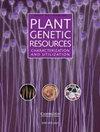Genetic purity of yam (Dioscorea spp.) multiplied through different seed multiplication techniques based on DArT SNP markers
IF 0.7
4区 生物学
Q3 PLANT SCIENCES
Plant Genetic Resources: Characterization and Utilization
Pub Date : 2023-04-04
DOI:10.1017/s1479262123000072
引用次数: 0
Abstract
Obtaining high-quality planting material for cultivation is a persisting challenge for yam (Dioscorea spp.) production in Africa. Efforts to provide a solution to this challenge have led to varying seed multiplication techniques but whose efficiency in maintaining the genetic purity of yam genotypes during the rapid multiplication process is yet unknown. Three improved varieties Swaswa, Kpamyo and Asiedu were multiplied through tissue culture, aeroponics system, field condition and vine cutting techniques. Leaf samples were collected at every stage of multiplication in the different techniques as well as the original mother plant for DNA fingerprinting. From a total of 16,922 SNP markers, an average heterozygosity of 0.091 was obtained with minor allele frequency of 0.119, and polymorphic information content of 0.166. The transition to transversion ratio was 62:38%. Hierarchical clustering of the genotypes and technologies discriminated the multiplied materials into three clusters with the first cluster consisting of only the variety Asiedu multiplied through aeroponics, vine and tubers collected from vine cutting and grown from the field. The second cluster consisted predominantly of the variety Kpamyo, with a little admixture from Asiedu. The third cluster consisted of only Swaswa. The different seed multiplication methods showed great potentials in conserving the genetic purity of genotypes used. Therefore, the use of these seed multiplication techniques could offer a lasting solution to the low multiplication ratio of yam without compromising the genetic integrity and offers a great opportunity for establishing a formal yam seed system.基于DArT SNP标记的不同种子增殖技术对薯蓣(Dioscorea spp.)遗传纯度的影响
获得高质量的种植材料是非洲山药(薯蓣属)生产的一个持续挑战。为解决这一挑战所做的努力导致了不同的种子繁殖技术,但其在快速繁殖过程中保持山药基因型遗传纯度的效率尚不清楚。通过组培、气培系统、田间条件和扦插技术,选育了3个改良品种——斯瓦娃、卡帕米欧和阿斯杜。在不同技术下的每个繁殖阶段采集叶片样本以及原始母株进行DNA指纹鉴定。在16922个SNP标记中,平均杂合度为0.091,次要等位基因频率为0.119,多态信息含量为0.166。转化比为62:38%。通过基因型和技术的分层聚类,将杂交材料分为3个簇,其中第1个簇仅由通过气培繁殖的品种Asiedu、从田间采摘的葡萄和块茎组成。第二簇主要由Kpamyo品种组成,并有少量来自Asiedu的混合物。第三组只有斯瓦斯瓦。不同的种子繁殖方法在保存所用基因型的遗传纯度方面显示出很大的潜力。因此,利用这些种子繁殖技术可以在不损害遗传完整性的情况下长期解决山药繁殖率低的问题,并为建立正式的山药种子系统提供了很好的机会。
本文章由计算机程序翻译,如有差异,请以英文原文为准。
求助全文
约1分钟内获得全文
求助全文
来源期刊

Plant Genetic Resources: Characterization and Utilization
Agricultural and Biological Sciences-Agronomy and Crop Science
CiteScore
2.80
自引率
0.00%
发文量
29
审稿时长
>12 weeks
期刊介绍:
Plant Genetic Resources is an international journal which provides a forum for describing the application of novel genomic technologies, as well as their integration with established techniques, towards the understanding of the genetic variation captured in both in situ and ex situ collections of crop and non-crop plants; and for the airing of wider issues relevant to plant germplasm conservation and utilisation. We particularly welcome multi-disciplinary approaches that incorporate both a technical and a socio-economic focus. Technical aspects can cover developments in technologies of potential or demonstrated relevance to the analysis of variation and diversity at the phenotypic and genotypic levels.
 求助内容:
求助内容: 应助结果提醒方式:
应助结果提醒方式:


